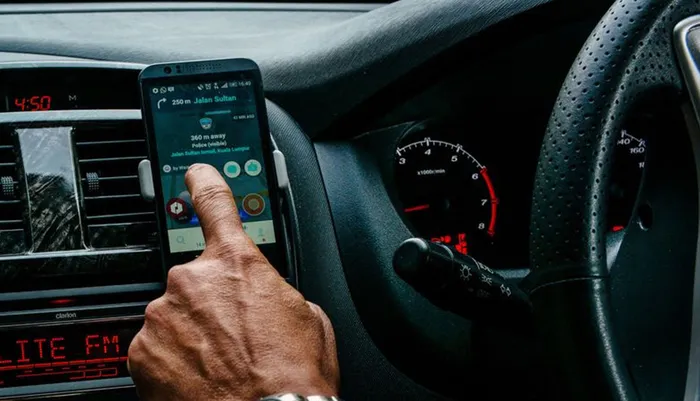New transport laws spark discontent among South African e-hailing drivers

The recent implementation of the National Land Transport Amendment Act has left South African e-hailing drivers feeling vulnerable as new regulations threaten their earnings and safety
Image: File
THE department of transport's gazetting of the National Land Transport Amendment Act on Friday, which recognised e-hailing services as being among the country's official modes of public transport system, pleased operators.
However, some of the accompanying regulations has unsettled some e-hailing services drivers, who feel that the new mandates could jeopardise their livelihoods.
Drivers for services like Uber and Bolt will now be required to adhere to requirements similar to those of traditional minibus taxi operators, which includes brand visibility and requisite permits.
Thokozani Nkosi, an Uber driver, expressed his frustration with the government's decision to enforce these changes, and also hinted that it would grow the taxi industry's hostility towards them.
“We now must operate like minibus taxis and the government seems to be favouring the taxi industry and succumbing to their demands,” Nkosi lamented.
He voiced concerns over operational limitations, worried that such restrictions would dilute his earnings.
Nkosi's big concern was that while they would be expected to operate only in designated areas, he asked about who would pay for their trips home, which would prove costly for them.
One of the conditions attached to the news laws require that e-hailing operators to register and comply with the South African Revenue Service (SARS) requirements and other trading regulations. Additionally, clear signage will be mandatory to confirm that vehicles belong to a licensed service.
While the government maintained that new measures would enhance the safety of drivers and passengers, and alleviate tensions with the traditional taxi sector, the reality on the ground is a more complex narrative.
Omar Parker, Secretary General of the National E-hailing Federation of South Africa (Nefsa), acknowledged that the e-hailing sector operated in a precarious environment.
“We’re attempting to collaborate with Santaco to find common ground and stabilise the industry.'
Parker raised concerns regarding ambiguities within the regulations affecting drivers' operational scope and income potential.
“We face constraints limiting our business flexibility. Price regulation also remains a significant challenge,” he said, emphasising the need for a clearer framework.
Echoing Parker's sentiment was Sipho Mabika from the KZN E-Hailing Council, highlighting the inadequacies of the current regulations, especially regarding pricing autonomy:
“Currently, the pricing is dictated solely by the app companies.
"We have advised the government that a provincial or national permit system should be considered to better address these existing issues,” said Mabika.
Another e-hailing driver, Thulani Mkhize, spoke about the worries the regulatuions would be bring.
“We are now more vulnerable; our cars will be branded.
"It feels like the government is exposing us to more danger,” Mkhize said, against the backdrop of the death Siyanda Mvelase, who was allegedly killed by operators from the taxi industry at Maponya Mall recently.
Attempts to receive comment from the department of transport's spokesperson, Collen Msibi, were unsuccessful.
DAILY NEWS